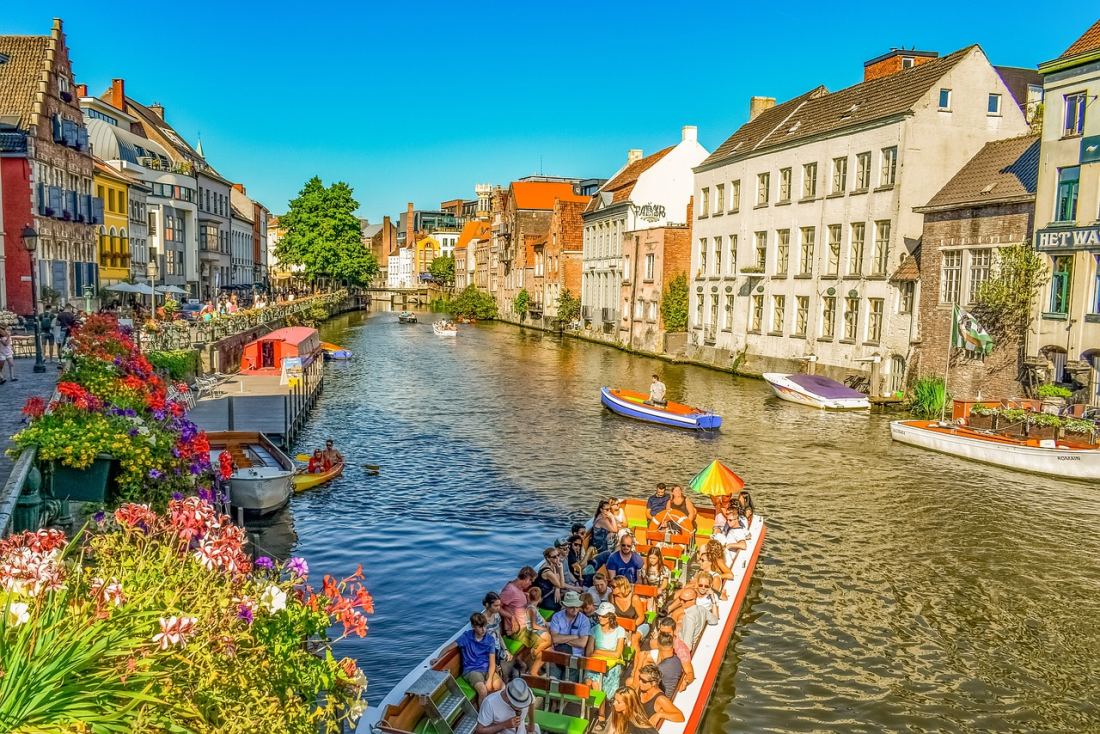Ghent was one of the richest cities in Europe during the late Middle Ages, so it’s no wonder we can see numerous wonderful buildings.
After Brussels and Antwerp, Ghent is the third largest city in Belgium by area. The settlement, founded at the confluence of the Scheldt and Lys rivers, is particularly noteworthy for its gastronomy. Famous products include the bagel-like mastel, Leonidas and cuberdon chocolates, babelutten candies, and Tierentyn mustard, which resembles Dijon mustard.
Table of Contents
Ghent attractions
Gravensteen Castle
The „Castle of the Counts” is one of Belgium’s most significant medieval fortifications. The building is an impressive example of medieval castle architecture, with massive walls, towers, and defensive structures.
The castle was built by the Flemish count Philip I in 1180 and was used for centuries as a residence for counts, as well as for administrative and military purposes. Its location was of strategic importance. Between the 14th and 18th centuries, the building served as a prison and later as a textile industry warehouse.
The exhibitions in the castle showcase various medieval weapons, armors, and torture devices. From its highest point, there’s a beautiful panoramic view of the city.
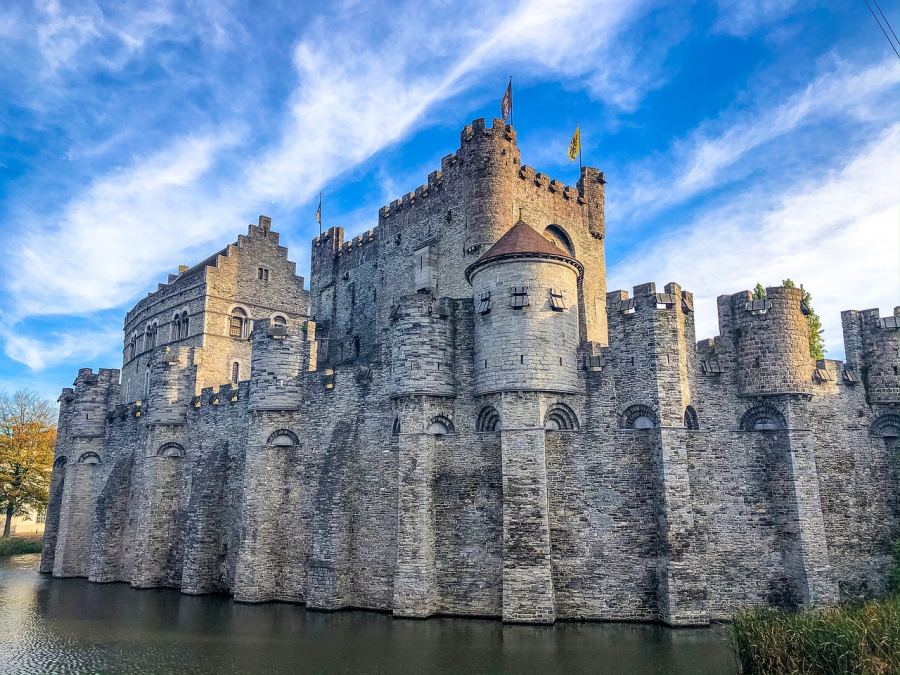
St. Bavo’s Cathedral (Sint-Baafskathedraal)
One of Ghent’s most outstanding attractions is this impressive Gothic-style church.
A smaller church stood here as early as the 10th century, which was expanded in Romanesque style in the 12th century. The building was gradually transformed later, reaching its current imposing form by the 16th century. The cathedral is named after Saint Bavo, the patron saint of Ghent, who was a Flemish nobleman and lived an ascetic life after his conversion.
The church’s most famous artwork is Jan and Hubert van Eyck’s famous 15th-century polyptych, The Adoration of the Mystic Lamb. This altarpiece is one of the most important works of the Flemish Renaissance, known worldwide for its rich details, symbolism, and technical execution. Another famous piece is the Peter Paul painting by Rubens.
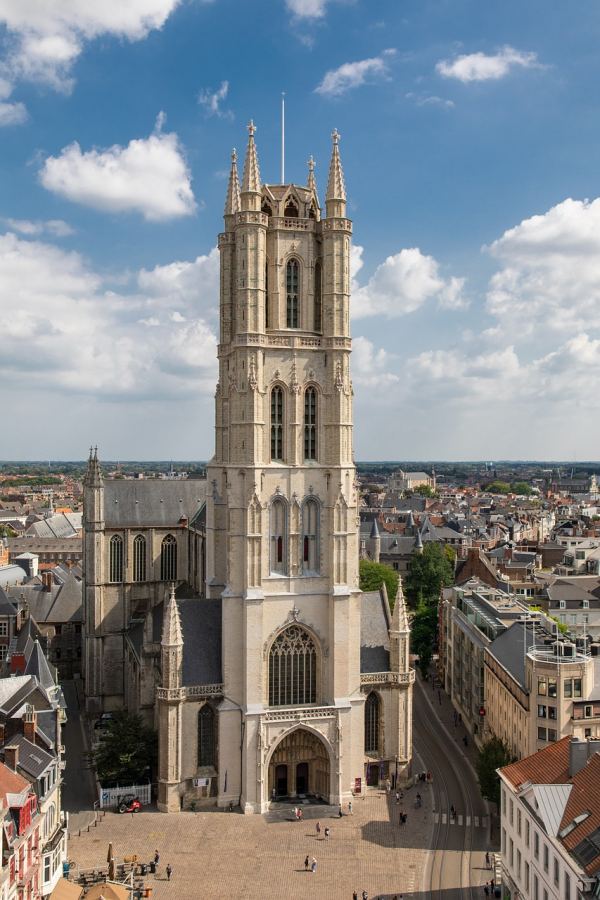
Belfry Tower
One of Ghent’s most iconic buildings is a symbol of the city’s medieval wealth and is part of the UNESCO World Heritage.
The 14th-century tower originally served as a watchtower, from where the population was warned of fire, attacks, or other dangers threatening the city. Built in Flemish Gothic style, it rises high with massive stones, and a dragon-shaped figure can be seen at the top of the tower.
The Belfry’s famous bells played a significant role in the city’s life. The most important bell of the bell tower is the „Klokke Roeland”. These were also rung on festive occasions and are still functioning today. The tower’s current carillon consists of more than 50 bells.
From its top, there’s a great view of the city. You can go up by elevator, but there are various exhibitions about the tower’s history on different levels.
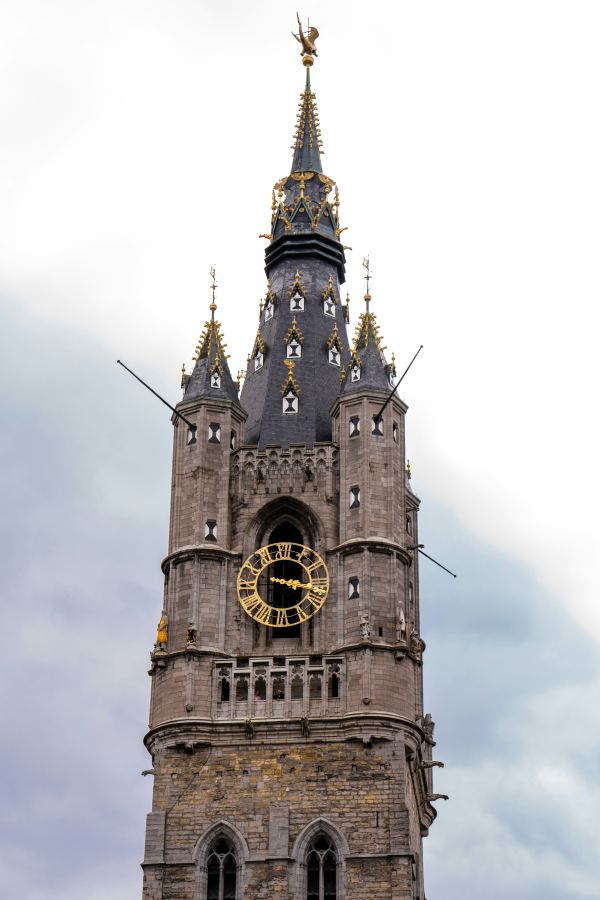
City Hall
It’s an outstanding attraction in terms of its exterior, interior, and history.
Construction began in 1519 and continued in several phases until the mid-17th century. Various architectural styles were used during the work, resulting in the city hall’s unique exterior. Many important historical events took place within its walls, including decisions of Flemish counts and the proclamation of city privileges.
It represents two main architectural styles: Gothic and Renaissance. The Gothic wing is particularly ornate, with its impressive facade richly decorated with carved stone statues, lace-like windows, and ornamental elements. The Renaissance wing is simpler and cleaner, reflecting the Flemish Renaissance style.
Among its inner halls, the most prominent is the council chamber, where the city council made decisions for centuries. The room’s decoration is wonderful, with murals and carved wooden ceilings by medieval and Renaissance masters.
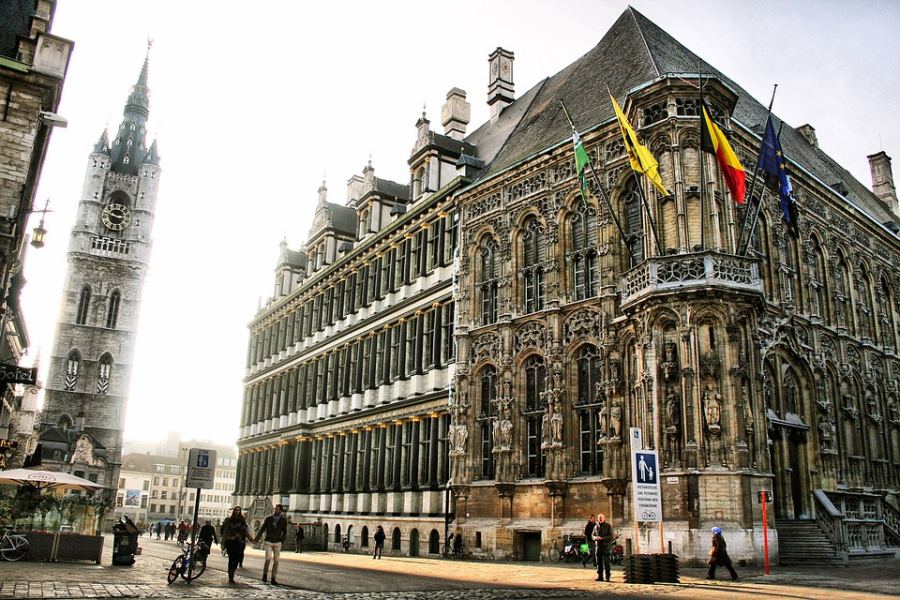
Korenmarkt Square
The square once functioned as a commercial center and is still one of Ghent’s central meeting places today.
It originally served as a site for grain trade, where local farmers sold their produce. The square has retained its medieval atmosphere, as it’s surrounded by numerous historical buildings and monuments. The most significant are St. Nicholas’ Church and the Market Hall.
The square often hosts various city events, festivals, and cultural events. One such event is the famous Gentse Feesten, which is held annually and is one of Ghent’s largest music and cultural festivals.
St. Nicholas’ Church
One of Ghent’s oldest and most significant churches, perhaps the most beautiful example of the city’s Gothic-style churches.
Its architectural style is associated with Flemish Gothic, featuring high arches, pointed windows, and ornate carvings. The church’s patron saint is St. Nicholas, the patron of merchants and sailors.
Inside, there are numerous artworks dating from the medieval and Renaissance periods. A notable element is the 19th-century organ.
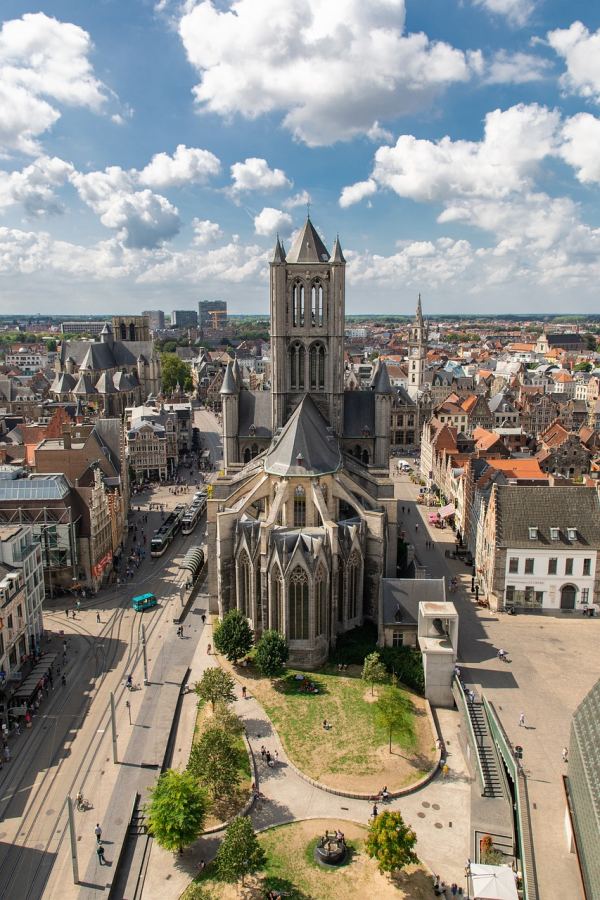
Veldstraat
Ghent’s busiest shopping street features elegant shops, restaurants, and historical buildings.
The street played a significant role in the city’s economic life, being the main site for the trade of commercial goods as it runs through the center of the city. In the 19th and 20th centuries, the street gradually transformed and became one of the most significant shopping areas.
St. Michael’s Bridge
Due to its architectural beauty, the bridge is also one of the city’s most popular photography spots.
It was built in 1905 to replace older medieval bridges that stood here. The current bridge was constructed in a neo-Gothic style, which fits well with Ghent’s historical cityscape. It’s named after the nearby St. Michael’s Church. An ornate statue of St. Michael can be found on the bridge.
Due to its central location, this is one of the best places to view Ghent’s medieval cityscape.
Graslei Quay
Together with the opposite Korenlei quay, it was one of Ghent’s most important commercial centers, and today it’s popular among locals and tourists alike.
Most of the buildings along the quay were built between the 12th and 17th centuries, in Renaissance and Gothic styles. The most significant is the House of the Grain Weighers, which was the headquarters of the former shippers’ guild and served as an important meeting place for sailors.
Graslei is also an excellent starting point for city sightseeing boat trips. Several boat tours depart from here, offering great photo opportunities of the historical city center.
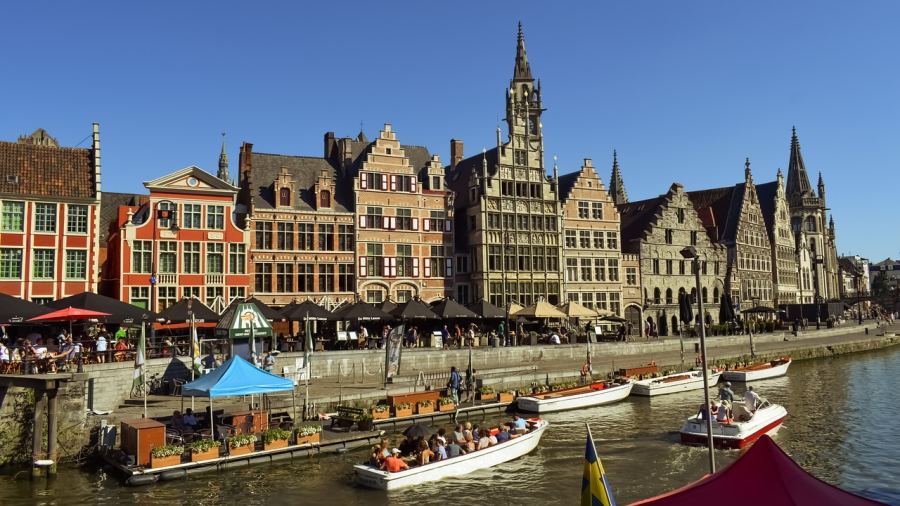
Graffiti Street
This small street is an officially designated area for graffiti artists, where they can freely paint their creations without it being considered illegal.
It was established on the initiative of Ghent’s city administration to provide a space for graffiti artists. Today, it has become a complete showcase for street art culture.
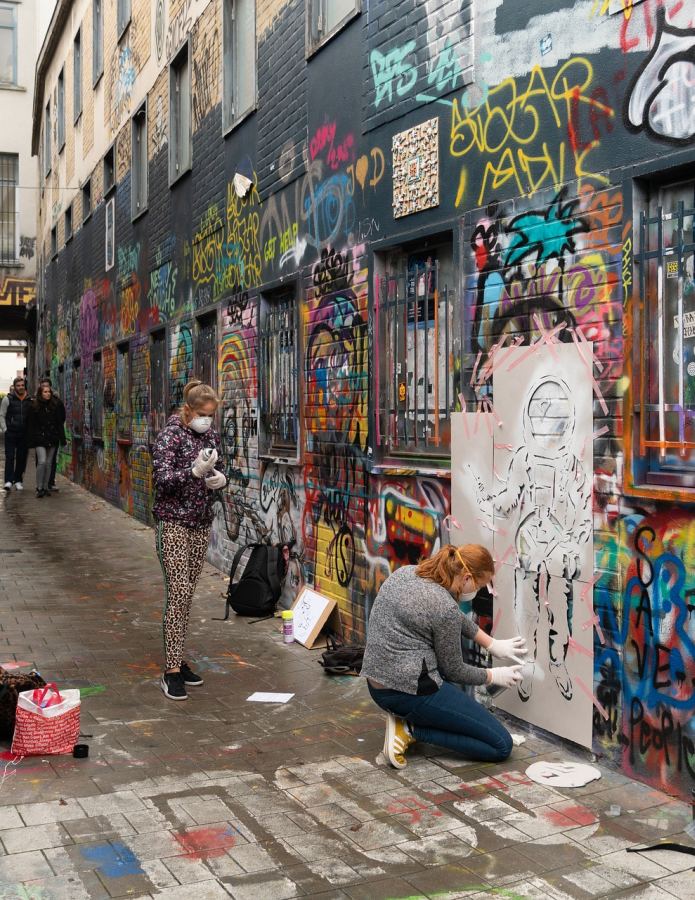
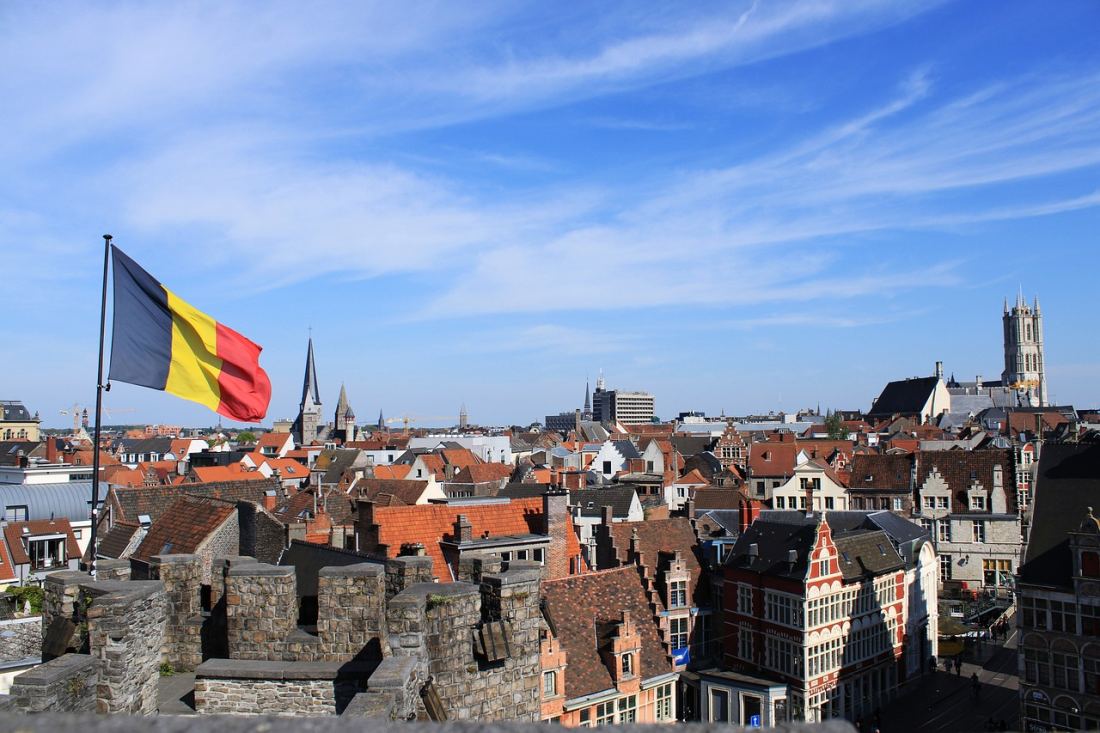
Best museums in Ghent
Ghent has a great cultural tradition due to its late medieval wealth. I will present the best museums!

